PET Becomes a Brother
As the Apple II became more popular with the release of the spreadsheet-based business app VisiCalc in 1979, Commodore
CEO Jack Tramiel wanted a computer that could compete to be ready to show the public at Winter CES 1980. There appeared to
be three distinct designs in the works at the time...
Twin Brothers of Color
First was a color version of the PET called the "Colour PET", which itself came in two versions. What's known is the first
version used the 6562 video chip, eventually used on the Commodore 64 prototype. The second version was essentially a
modified CBM 8032 PET with updated firmware for new eight 160x100 sprite and 80-column text graphics modes and color.
Basically, both were scrapped.
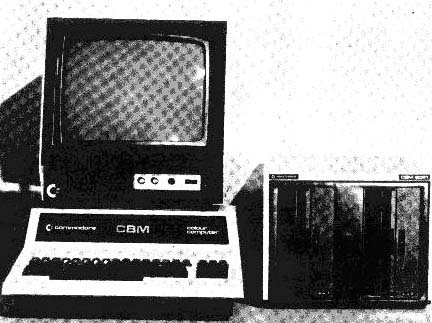
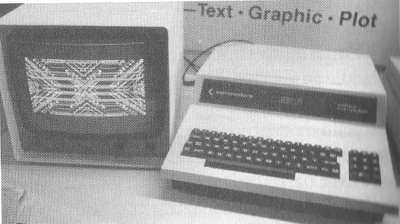
The Other Brother
Second was a computer called the TOI (The Other Intellect) designed by former MOS engineers Chuck Peddle and Bill Seiler.
Not much is known about the specs of this prototype, but it's said it would've used a 6502 of some kind and an early VIC
chip. At a meeting in France on April 1, 1980, Michael Tomczyk, marketing strategist, attempted to convince everyone that
this is the machine to bring to market.
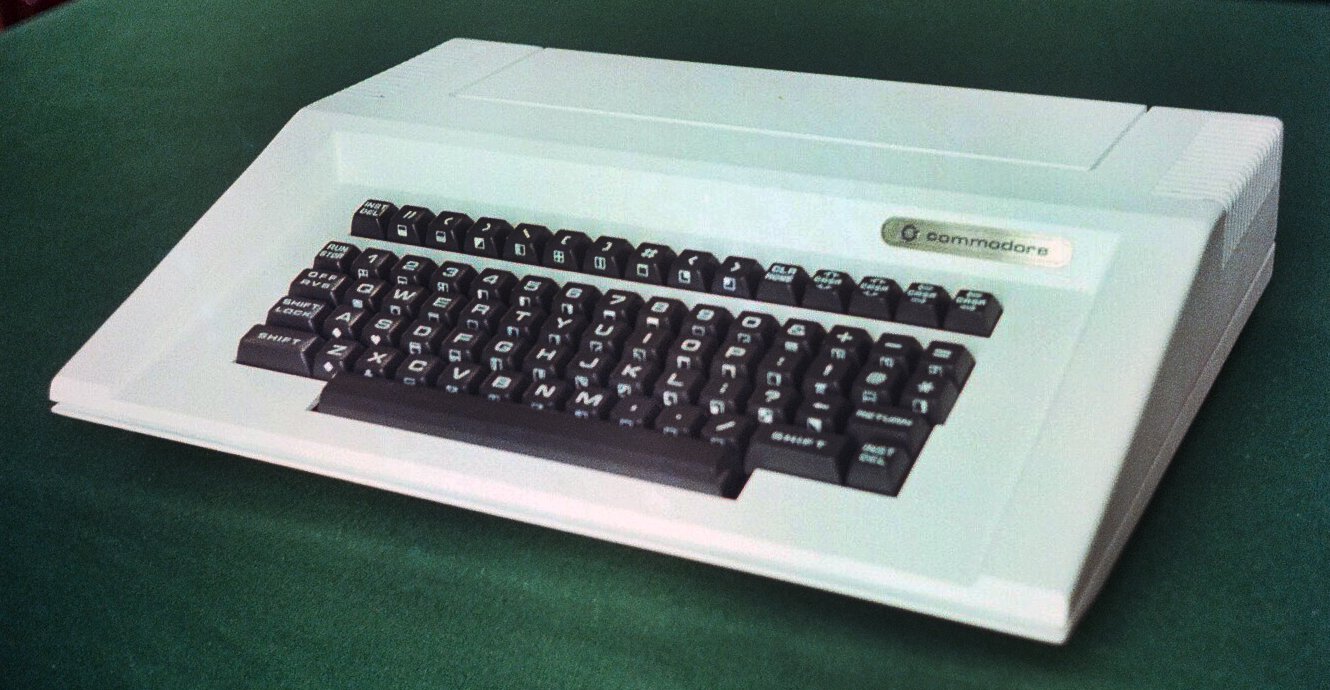
The keyboard is interesting as not only were the keys taken straight from a later PET, but duplicates
of some keys like cursor and INST/DEL keys were put in. This was well before the VIC-20's keyboard layout was finalized,
so they may have been testing out where they put certain keys. Especially since "$", "%", and "!" keys are missing here.
Smothered Brother
Meanwhile, the third prototype, under the name "MicroPET", was developed by new MOS engineer Robert Yannes and two others.
It's a cute but appropriate name because it used spare parts from a PET 2001, including a keyboard in its own case, and a
cassette drive plugged into the back.
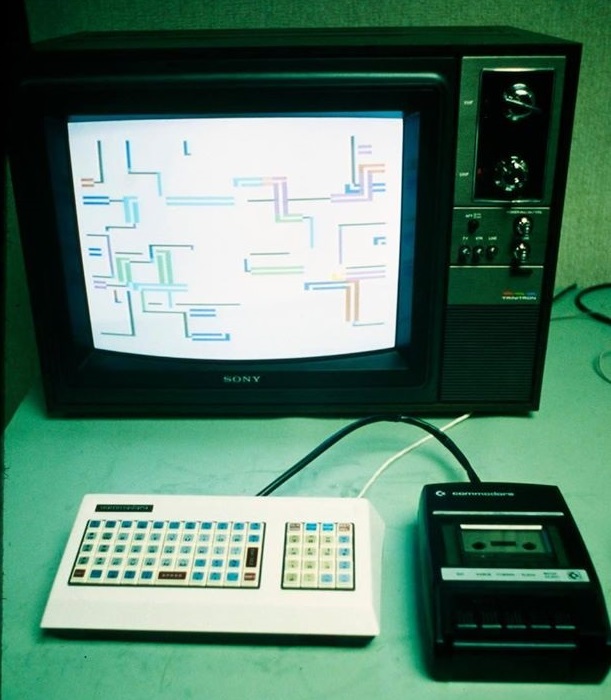
The TOI and MicroPET would both be shown at CES, with the TOI prototype being rejected while the MicroPET was chosen to be
mass-produced and brought to the market. The finished product was way closer to the TOI prototype than the MicroPET, even
though its VIC chip displayed 22-column text. Regardless, these two prototypes heavily influenced the design of the final
product.
Its Name is VIC
The Commodore VIC-20 was released in late 1980 in Japan as the VIC-1001 and the US in 1981. It had some shortcomings, such as
having just 5 KB of RAM. Even worse, almost 2 KB was used by the KERNAL ROM, video display, and BASIC, leaving 3 KB for the
user. Knowing this was an issue, Commodore created the "Super Expander" cartridge, which added 3 KB of RAM and some extra BASIC
commands. They would also offer cartridges that added 8 and 16 KB, and even 32 and 64 KB ones by third-parties! While later PETs
used BASIC version 4.0, the VIC-20 used a less-sophisticated version 2.0 so the computer could be sold at a lower price. Another
weakness of the machine was its low resolution text and graphics. The VIC chip only allowed 22-by-23 text which made writing
BASIC programs a cumbersome task. It had no hardware sprites, so modified text and graphical characters were used as sprites in
games.
Despite the disadvantages, the VIC-20 became the first computer to sell in the millions! The system sold about 2,500,000 units
in total throughout the four years it was in the market. The VIC-20 was discontinued in 1985 as consumers were buying the
price-dropped 64 more often by then.
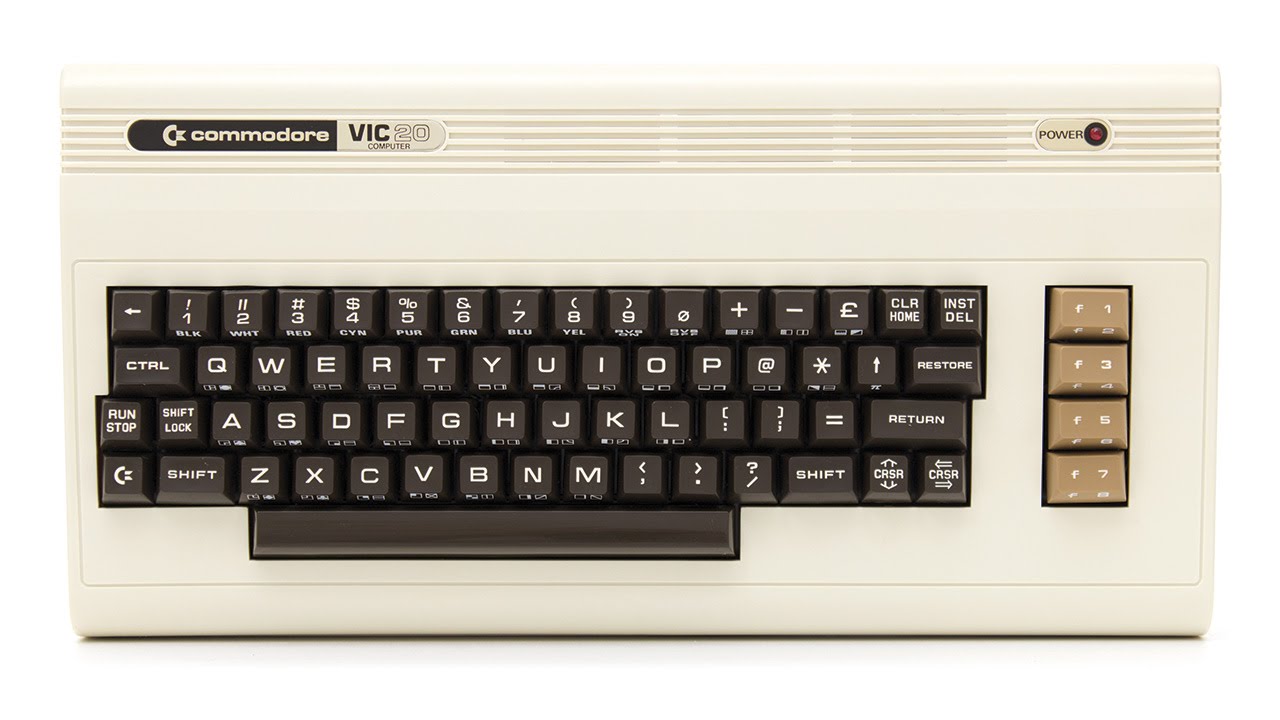
This first revision of the VIC-20 has keys that resemble the later PET 2001s'. I don't know if the keys were
made fresh for this unit or if, more likely, they came straight from a PET assembly line and popped on this machine like with
the prototypes.

A while later, the keys were slightly designed with a rounded font. The badge with rainbow stripes in the
middle was also introduced.

This is the most common appearance of a VIC-20. Some of these would still use the early monochrome black and
gold badge while most later machines' badges would have rainbow lines in the middle.







